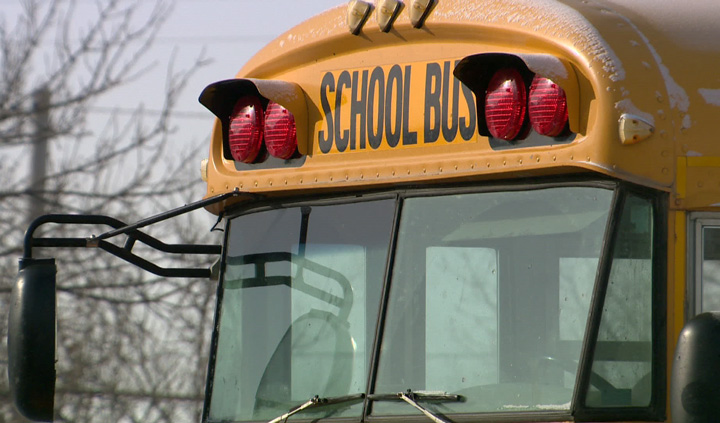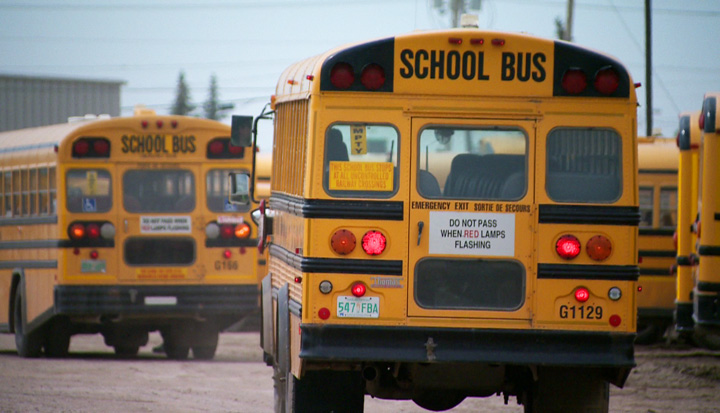TORONTO – Like many Canadian kids, Jim Beckett’s two young daughters ride the school bus each day—to the Lower Nicola Indian Band school in Merritt, B.C. But they have something other students don’t: A bus supervisor named Barb to prevent bullying.

Beckett said his girls had been bullied in the past, but that a solution came faster than it did for a Minnesota mom who only got help from school staff after a video of her children describing being bullied went viral.
“There was a lot of fighting on the bus. And it’s hard for the bus drivers to deal with that and to arrive safely, so a lot of times kids’ll get away with it,” said Beckett.
“And ever since Barb’s been on that bus, there’s been no more of it. It’s come to zero tolerance. And I think every school should have it.”
School principal Angie Sterling said Barbara Basil was hired as part-time staff a few years ago after reports of behaviour problems on the two buses, each with 30 students, ranging from Kindergarten to Grade 7.

And there’s been a big change since she started.
“Well the kids sit in the seats home on the bus, they don’t jump around,” said Basil. “They keep their hands to themselves, they’re not hurting anybody, they have assigned seating on the bus. … The bus drivers can’t keep an eye on them when they’re driving, right?”
READ MORE: How social bullying works & what victims can do about it
Canadian Safe Schools Network president Stu Auty has worked in education for 30 years, and says the bus is a “big deal” because kids are isolated; an hour bus ride can be horrific for kids who get picked on the whole time.
‘You have no help,’ says bus driver
Calgary resident Clarissa Rayner has been driving school buses for three years; first for two public schools with up to 68 Grade 5 to Grade 8 students—an age at which she said “bullying starts to become bigger.”
She said she didn’t receive special training, but was told if anything happens to write it up in an incident report for the school to deal with. Rayner said she didn’t have much interaction with the school unless she was handing in one of these pink slips, and was never informed of any results.
And the pink slip—if the student misbehaving even told her their real name—was sometimes too little too late.
“Now I drive for a chartered school and I know my kids a bit better—there’s 43 kids on my run now,” she explained. “I’m able to say: ‘You know what Derek? You need to move to the front. I can see you and Devon aren’t getting along today.’ But before, and for most of the other drivers I know, they don’t even know half their kids’ names. They don’t realize what’s going on.
Anti-bullying training for bus drivers
- Life in the forest: How Stanley Park’s longest resident survived a changing landscape
- Bird flu risk to humans an ‘enormous concern,’ WHO says. Here’s what to know
- Mental health support still lacking 4 years after mass shooting: Nova Scotia mayor
- Buzz kill? Gen Z less interested in coffee than older Canadians, survey shows
But some school boards in other Canadian cities say the bus drivers handle bullying adequately.
“In most cases, the number of students on the bus is pretty limited and at this stage we don’t have reason to believe that we need all those extra layers because it would have to be staffed,” said Toronto Catholic District School Board (TCDSB) spokesperson John Yan when asked if anti-bullying measures like a bus monitor have been considered.
Yan said his board’s protocol is that a bus driver will issue a pink slip to a student showing poor behaviour on the bus, which acts as an incident report submitted to the school. Principals will follow up on pink slips with the student and parents in question.
While specific numbers on how many bus-bullying complaints are made are kept only at the local school level, Yan said he believes “all incidents that are pink-slipped are dealt with immediately by the principal.”
On top of that, the bus drivers in the TCDSB—unlike Rayner’s experience in Calgary—undergo training and annual refresher courses on bus discipline and anti-bullying techniques.
“They’ll have annual refreshers on student management, bus discipline, even human rights and cultural sensitivity,” said Yan. “So we run the full gamut in terms of ensuring that buses are an extension of the classroom, and as safe as the classroom.”
READ MORE: Who the new cyberbullying law will help and hurt
Rayner said driving for a chartered school has made things easier for her: She has a list of her students and has gotten to know them better. But she still thinks all buses should have an extra person like a bus supervisor.
As for Beckett, he said his girls were skeptical of following the rules when the bus supervisor was introduced, but now they enjoy the trip.
“They haven’t asked for a ride to school in I don’t know how long, so it’s definitely made a huge difference.”




Comments